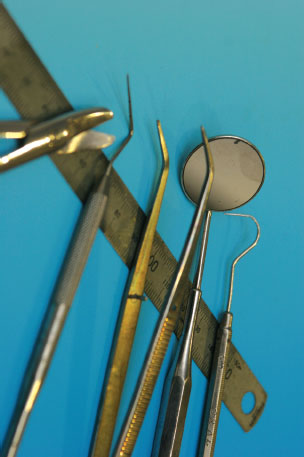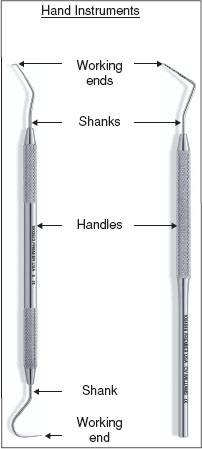SECTION 3
BASIC INSTRUMENTS
There are a few basic instruments that are universal to almost every procedure in dentistry.



GENERAL FEATURES OF DENTAL INSTRUMENTS
FIGURE 3.1
Working end(s) of instruments
- Are the functional parts of the instrument
- Can have a variety of functions including cutting, packing, carving, placing and condensing
- Are adapted to the function of the particular instrument
- May be bevelled (i.e. the working end is cut at an angle)
- An instrument can be single-ended (one working end) or double-ended (two working ends)
Shank of an instrument
- The part between the working end and the handle
- Can be straight or angled
- The function of the instrument determines the angle and flexibility of the shank
Handle of an instrument
- Is the part of the instrument that the operator grasps
- Provides stability and leverage
- Design is related to the function of the instrument
- Examples:
- The handle of an upper extraction forceps may be curved to facilitate a palm grasp for the operator
- The handle of a rubber dam clamp forceps is rounded to fit in the palm of the operator’s hand
- A serrated handle allows a better grip
- A large handle allows a palm grasp
THE BASIC DENTAL INSTRUMENTS
FIGURE 3.2
Name
Stay updated, free dental videos. Join our Telegram channel

VIDEdental - Online dental courses


